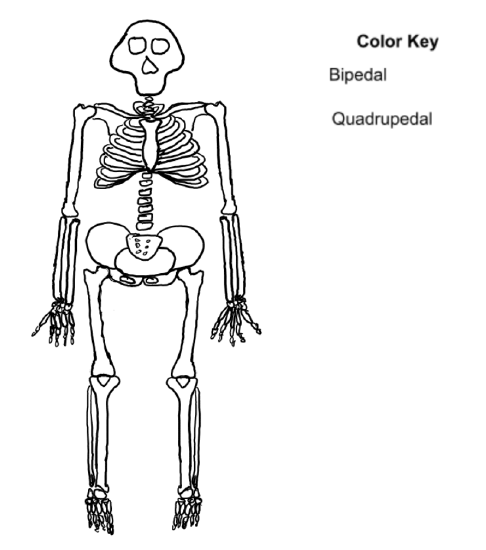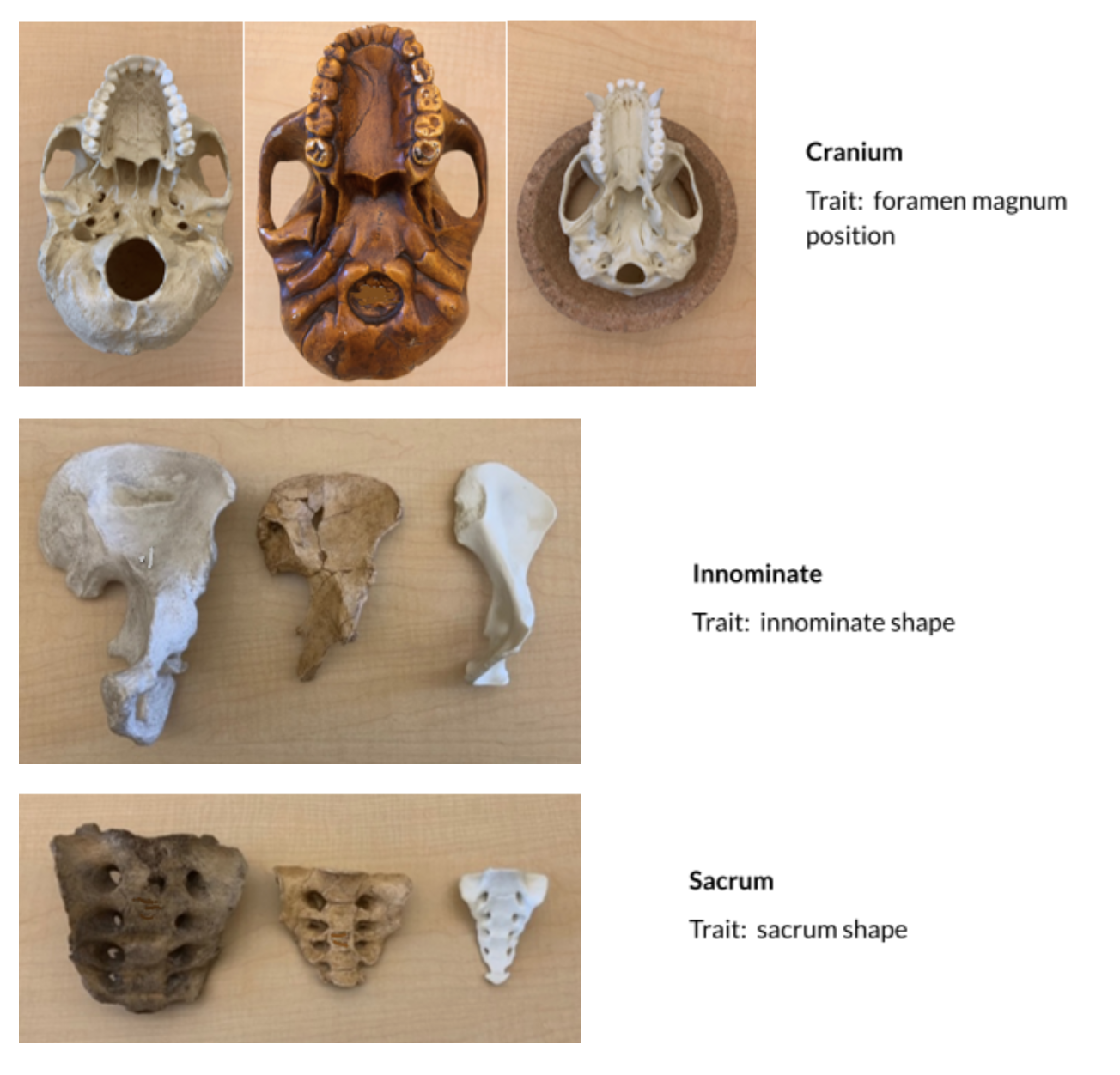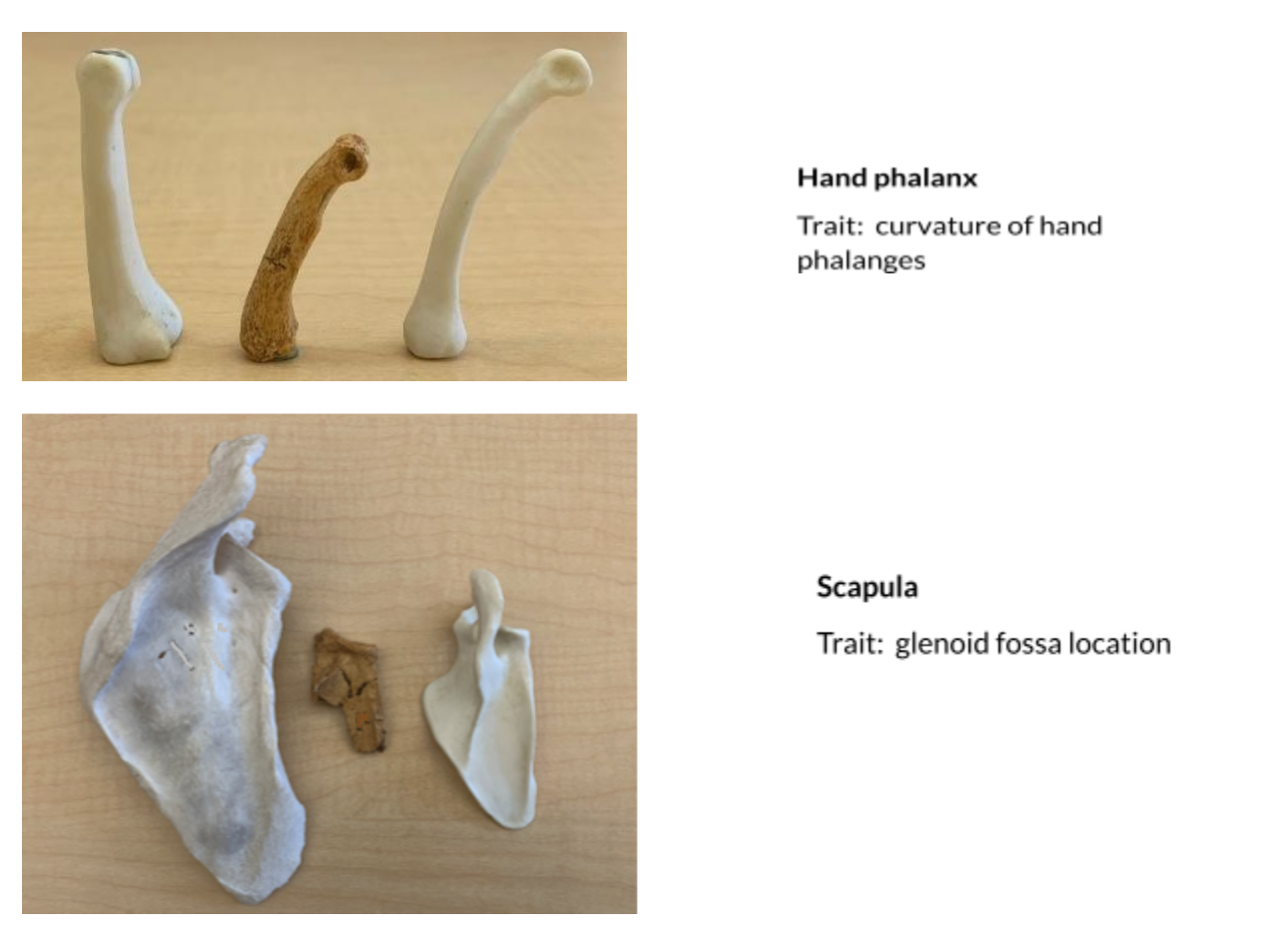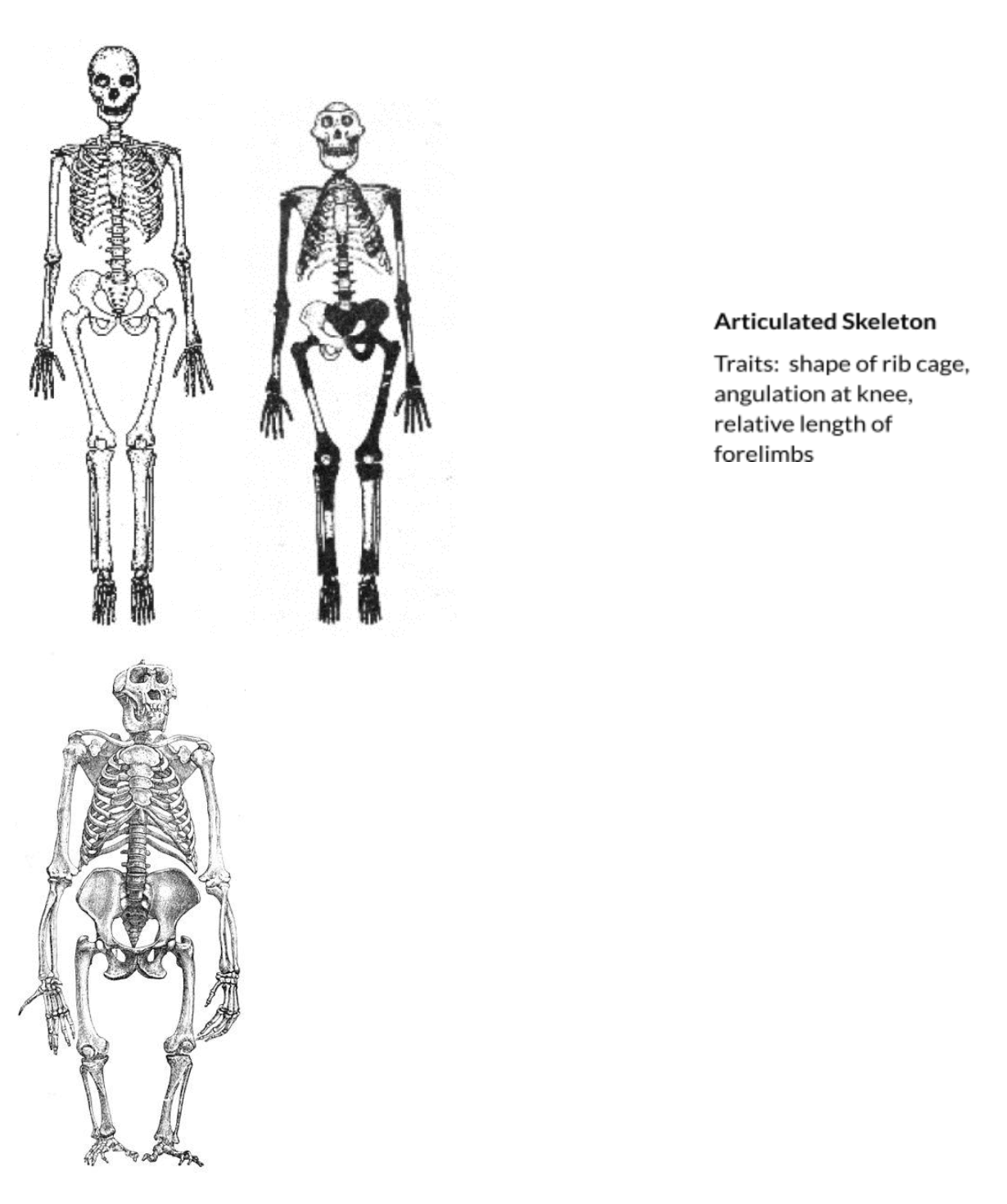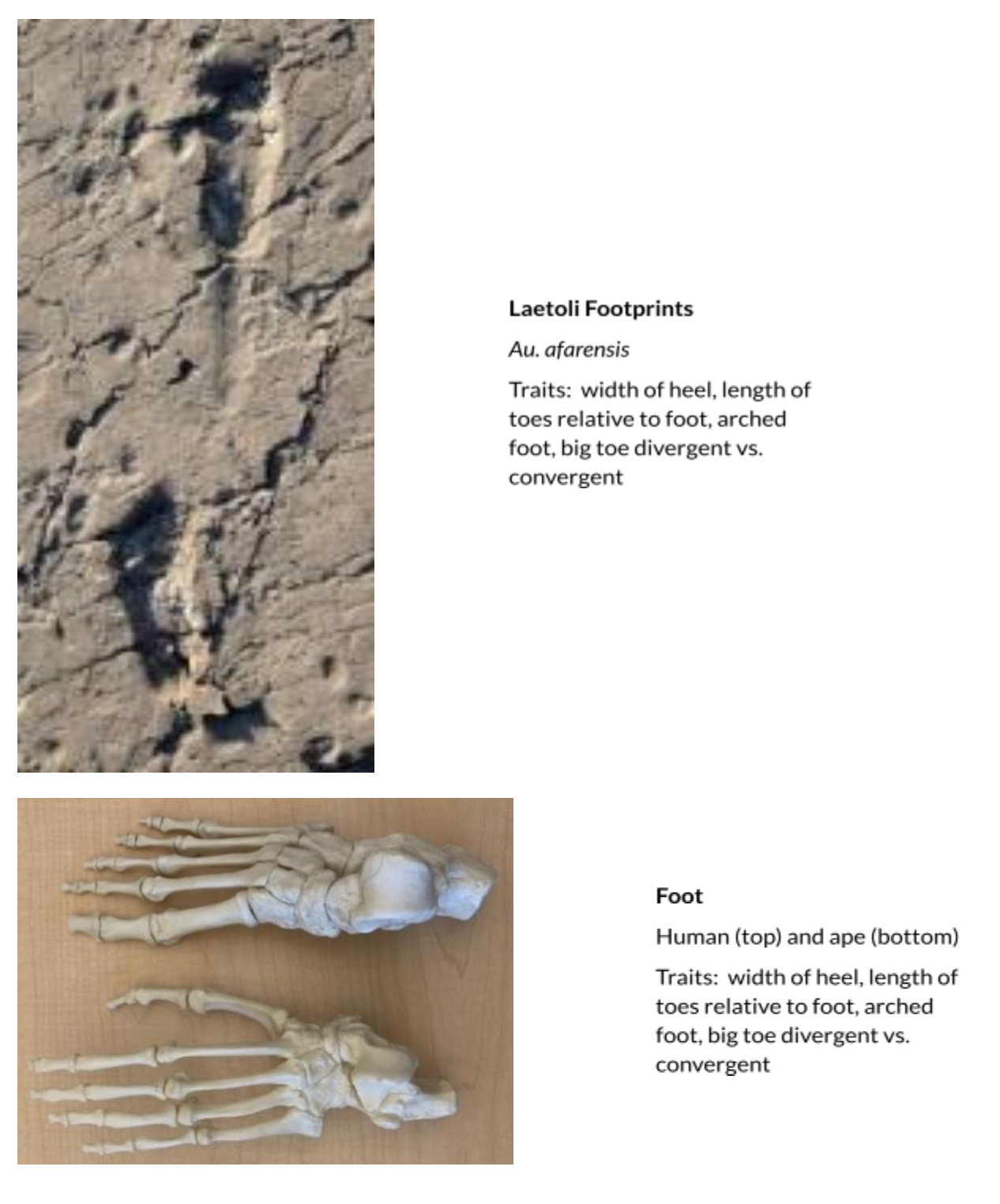9.1: Australopithecine Locomotion
- Page ID
- 138540
\( \newcommand{\vecs}[1]{\overset { \scriptstyle \rightharpoonup} {\mathbf{#1}} } \) \( \newcommand{\vecd}[1]{\overset{-\!-\!\rightharpoonup}{\vphantom{a}\smash {#1}}} \)\(\newcommand{\id}{\mathrm{id}}\) \( \newcommand{\Span}{\mathrm{span}}\) \( \newcommand{\kernel}{\mathrm{null}\,}\) \( \newcommand{\range}{\mathrm{range}\,}\) \( \newcommand{\RealPart}{\mathrm{Re}}\) \( \newcommand{\ImaginaryPart}{\mathrm{Im}}\) \( \newcommand{\Argument}{\mathrm{Arg}}\) \( \newcommand{\norm}[1]{\| #1 \|}\) \( \newcommand{\inner}[2]{\langle #1, #2 \rangle}\) \( \newcommand{\Span}{\mathrm{span}}\) \(\newcommand{\id}{\mathrm{id}}\) \( \newcommand{\Span}{\mathrm{span}}\) \( \newcommand{\kernel}{\mathrm{null}\,}\) \( \newcommand{\range}{\mathrm{range}\,}\) \( \newcommand{\RealPart}{\mathrm{Re}}\) \( \newcommand{\ImaginaryPart}{\mathrm{Im}}\) \( \newcommand{\Argument}{\mathrm{Arg}}\) \( \newcommand{\norm}[1]{\| #1 \|}\) \( \newcommand{\inner}[2]{\langle #1, #2 \rangle}\) \( \newcommand{\Span}{\mathrm{span}}\)\(\newcommand{\AA}{\unicode[.8,0]{x212B}}\)
Australopithecine Locomotion
Supplies Needed
- Casts and/or images (see Supplemental Images) of the following from an anatomically modern human, modern ape, and Australopithecus afarensis:
- Cranium
- Innominate
- Sacrum
- Hand phalanx
- Scapula
- Articulated foot (Laetoli Footprints for Au. afarensis)
- Full articulated skeleton
- Colored pencils, pens, or crayons (or ability to color on computer)
- Student worksheet
Readings
- Warren, Kerryn et al. 2019. Chapter 9: Early Hominins. Explorations.
Introduction
Steps
- Provide students with the casts and images.
- Review or define the relevant skeletal features and other information they may need when making comparisons (see Tips and Suggestions).
- Students can work in groups or independently.
- Review the instructions and have students complete the worksheet.
Review Questions
Adapting for Online Learning
Tips and Suggestions
- Most of the features are available from the casts of disarticulated Lucy.
- I recommend using the images of the scapula/glenoid fossa for both in-person and online classes because the fragment of scapula from Lucy is difficult for students to orient for comparisons.
- When using casts to compare curvature of the hand phalanges, it is easiest to place the proximal ends flat on a table (see Supplemental Images).
References
Image Attributions
Australopithecine Locomotion Worksheet
Part I
- Compare the morphology of Au. afarensis with the modern human and ape. When assessing traits of the foot, use the Laetoli Footprints as a proxy for Au. afarensis foot.
- Decide whether each trait is more similar to the bipedal human or the quadrupedal/ brachiating ape and mark the appropriate box.
- Circle the appropriate description of the skeletal element or feature for Au. afarensis.
| Bipedal Trait | Quadrupedal Trait | Description (circle) | |
| Foramen magnum position | • | • | Inferior vs. Posterior |
| Innominate shape | • | • | Short/wide vs. Long/tall |
| Sacrum shape | • | • | Short/wide vs. Long/tall |
| Curvature of hand phalanges | • | • | Slight vs. Pronounced |
| Glenoid fossa location | • | • | Lateral vs. Cranial |
| Shape of rib cage | • | • | Barrel vs. Funnel |
| Angulation at knee | • | • | Valgus knee vs. Straight |
| Relative length of forelimbs | • | • | Short vs. Long |
| Length of toes relative to foot | • | • | Short vs. Long |
| Width of heel | • | • | Wide vs. Narrow |
| Arched foot | • | • | Arched vs. Flat |
| Big toe divergent vs. convergent | • | • | Mostly convergent vs. Mostly divergent |
Part I
- Pick one color to represent bipedal indicators and a different color to represent quadrupedal/brachiating indicators. Color the “Color Key” accordingly.
- For each trait listed on the previous page, color over the regions of the skeleton in the color corresponding to whether it is more similar to bipeds or quadrupeds. (For the foramen magnum, you can color beneath the skull since it is not visible in the drawing).
- After mapping each trait, answer the question below.


